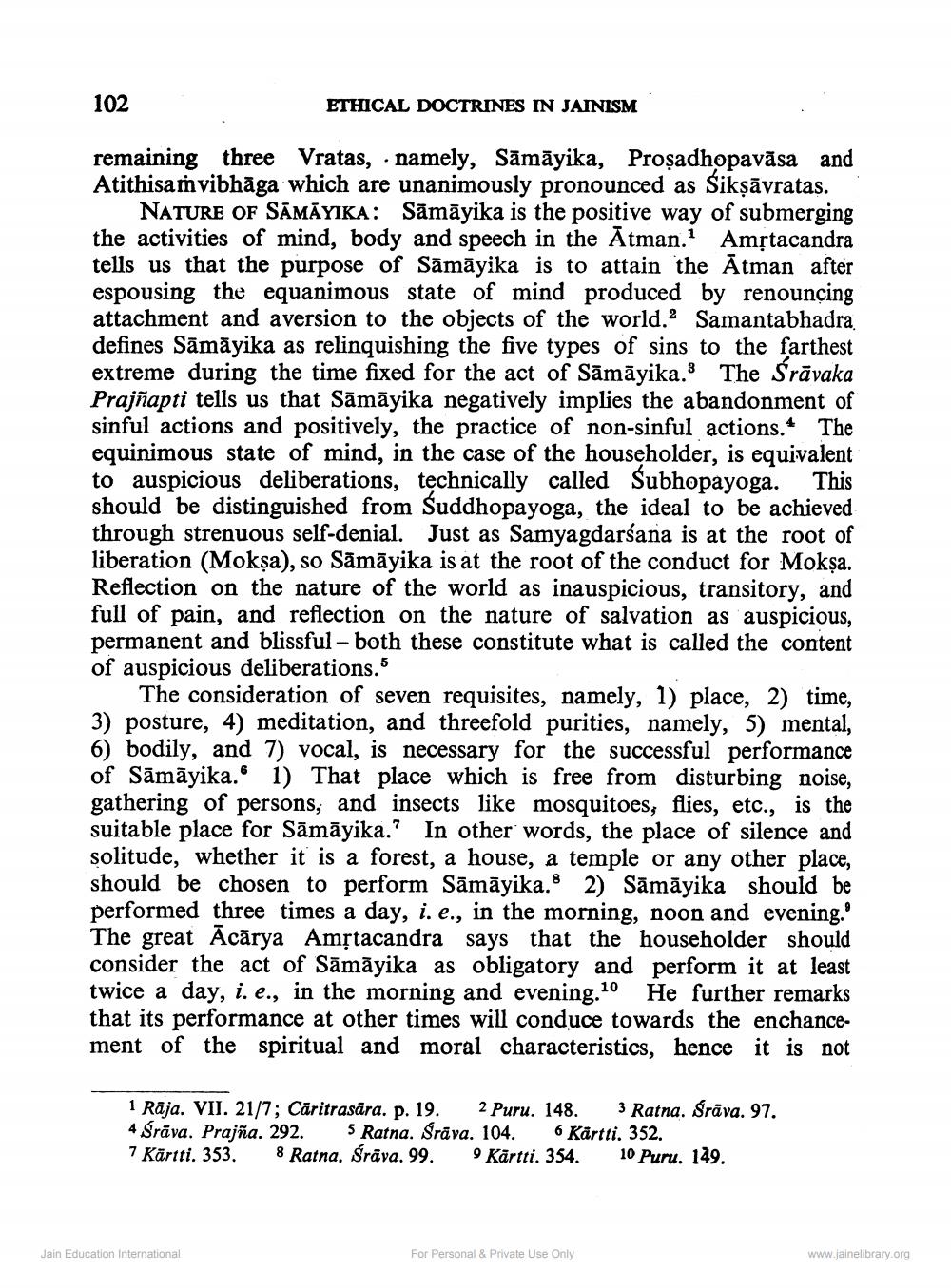________________
102
ETHICAL DOCTRINES IN JAINISM
remaining three Vratas, namely, Sāmāyika, Proşadhopavāsa and Atithisam vibhāga which are unanimously pronounced as Śikṣāvratas.
NATURE OF SĀMĀYIKA: Sāmāyika is the positive way of submerging the activities of mind, body and speech in the Atman.1 Amrtacandra tells us that the purpose of Sāmāyika is to attain the Atman after espousing the equanimous state of mind produced by renouncing attachment and aversion to the objects of the world. Samantabhadra. defines Sāmāyika as relinquishing the five types of sins to the farthest extreme during the time fixed for the act of Sāmāyika. The Srāvaka Prajñapti tells us that Sāmāyika negatively implies the abandonment of sinful actions and positively, the practice of non-sinful actions. The equinimous state of mind, in the case of the householder, is equivalent to auspicious deliberations, technically called Subhopayoga. This should be distinguished from Suddhopayoga, the ideal to be achieved through strenuous self-denial. Just as Samyagdarśana is at the root of liberation (Mokşa), so Sāmāyika is at the root of the conduct for Moksa. Reflection on the nature of the world as inauspicious, transitory, and full of pain, and reflection on the nature of salvation as auspicious, permanent and blissful - both these constitute what is called the content of auspicious deliberations."
The consideration of seven requisites, namely, 1) place, 2) time, 3) posture, 4) meditation, and threefold purities, namely, 5) mental, 6) bodily, and 7) vocal, is necessary for the successful performance of Sāmāyika. 1) That place which is free from disturbing noise, gathering of persons, and insects like mosquitoes, flies, etc., is the suitable place for Sāmāyika.? In other words, the place of silence and solitude, whether it is a forest, a house, a temple or any other place should be chosen to perform Sāmāyika. 2) Sāmāyika should be performed three times a day, i. e., in the morning, noon and evening." The great Ācārya Amộtacandra says that the householder should consider the act of Sāmāyika as obligatory and perform it at least twice a day, i. e., in the morning and evening.10 He further remarks that its performance at other times will conduce towards the enchancement of the spiritual and moral characteristics, hence it is not
1 Rāja. VII. 21/7; Căritrasāra. p. 19. 2 Puru. 148. 3 Ratna. Srāva. 97. 4 Śrāva. Prajña. 292. 5 Ratna. Srāva. 104. Kärtti. 352. 7 Kärtti. 353. 8 Ratna. Srava. 99. 9 Kärtti. 354. 10 Puru. 149.
Jain Education International
For Personal & Private Use Only
www.jainelibrary.org




